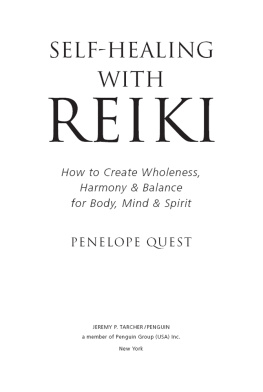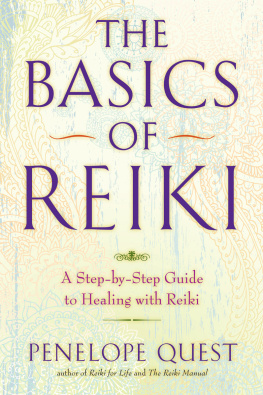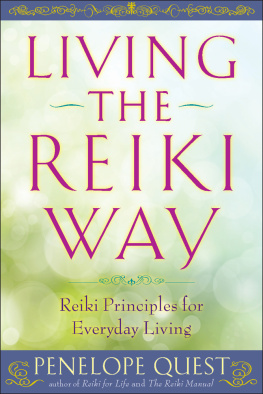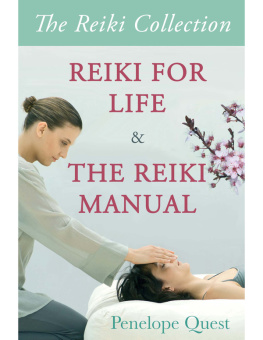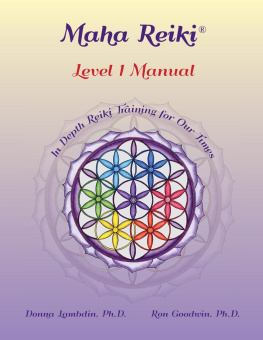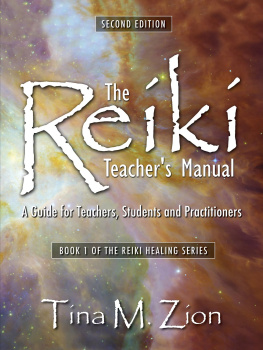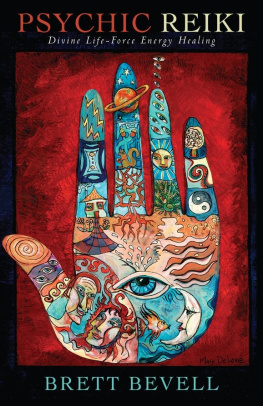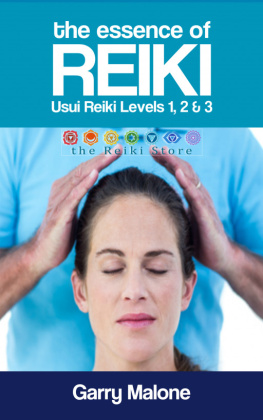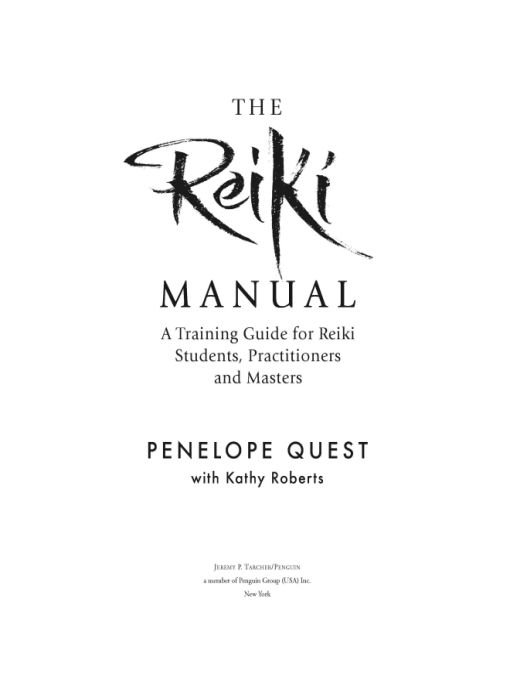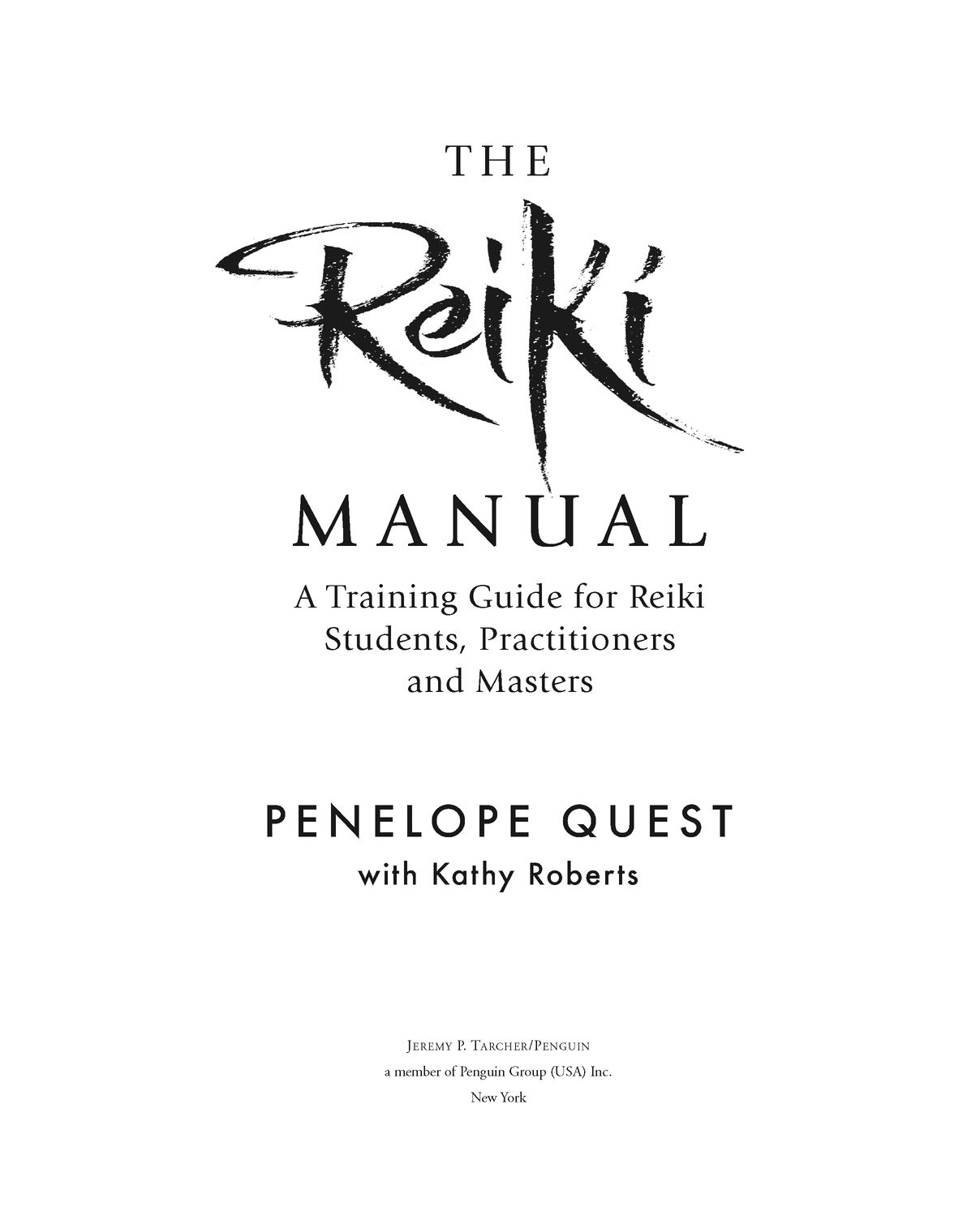Table of Contents
Thank you to all of our past students, who over the years have helped
us experience the joy of teaching, and have helped us to learn as
much as we hope we have helped them. Without you, this manual
would not have been possible.
ACKNOWLEDGMENTS
We would like to express our heartfelt gratitude to the many people who have helped, directly or indirectly, with this manual, especially to our family and past academic teachers who helped so much to prepare us to be writers. Thanks also go to the Reiki teachers with whom weve worked, including Kristin Bonney, William Lee Rand, Andy Bowling, Richard Rivard, Robert Jefford and Frans Stiene, and to the many Reiki students who have brought love, learning and laughter to Reiki courses and other Reiki events over the years.
We would also like to thank the many Reiki friends who have inspired and helped us, including Helen Galpin, Jackie Gleeson and, especially, Doreen Sawyer from the UK Reiki Federation (UKRF) and the members of the Reiki Regulatory Working Group (RRWG) and the Reiki Council. In addition, thanks go to Gill Bailey, Claudia Dyer and Rebecca Woods from Piatkus, our copy editor Charlotte Ridings, and to our wonderful illustrator, Rodney Paull.
INTRODUCTION
Reiki as a holistic healing therapy has been taught in the West since 1938 and in Japan since the early 1920s, and now there are millions of people all over the world who have trained in Reiki, at least at the first level, and even more who have experienced a Reiki treatment.
In recent years there have been attempts in a number of countries to formalize the requirements for the professional practice of Reiki, to ensure common standards so that clients receive the best possible treatment from fully trained, professional practitioners. The route into professional practice at the moment in most countries is for a student to attend one or more courses taught by a Reiki Master (Teacher). However, because all Reiki Masters currently operate independently, they have to produce their own teaching materials, and obviously the standard of documentationand teachingvaries enormously.
In Britain the various Reiki organizations got together in 2003 to discuss the idea that there was a need for a more structured approach to Reiki training for those wishing to practice professionally, so they began the process of working toward voluntary self-regulation. Their initial task was to produce National Occupational Standards (NOS) for Reiki, with the ultimate aim of setting up a single Register of Professional Reiki Practitioners. As Vice-President and Education Co-ordinator of the UK Reiki Federation in 2005/06, I was a member of the Education and Accreditation Committee of the Reiki Regulatory Working Group responsible for producing an acceptable Core Curriculum for Reiki practitioner training.
Because training in Reiki can be so variable and is sometimes achieved in just a few days, it is unlikely that the current courses offered by most Reiki Masters will be sufficient to meet the NOS, so students will have to gain further knowledge and experience so that they can fulfill the new requirements. This is what motivated my coauthor, Kathy Roberts, and myself to write The Reiki Manual, because we wanted to provide a source of information about good practice, not only for those wishing to practice Reiki informally on family or friends, but particularly for anyone wanting to practice Reiki professionally. Moreover, because the principles of good practice are the same wherever you are working, it will provide any practitioner in any country with a really comprehensive guide to the professional practice of Reiki.
As many of you will know, I have been involved in Reiki since 1990, and have been teaching it since 1994, and lots of you will have already come across my other booksReiki for Life, Self-Healing with Reiki, The Basics of Reiki and Living the Reiki Way. However, this time I have collaborated with my daughter Kathy Roberts, because writing books and writing manuals can be quite different skills, and she has many years experience not only in Reiki, but also in writing course manuals as part of her job as a trainer, so her input has been invaluable. Our combined knowledge and experience has put us in a unique position to produce this complete manual for Reiki practice, which we hope you will find not only very useful and interesting, but also enjoyable!
Part One
THE REIKI TRAINING PROGRAM
Definitions of Terms
The Reiki Training Levels
Different Types of Training
Choosing Your Reiki Master
Continuing Your Training
Chapter One
HOW TO USE THIS MANUAL
In the 1920s a Japanese Buddhist priest, Mikao Usui, rediscovered an ancient way of channeling healing energy, creating the Usui Spiritual Energy Healing System, or Usui Reiki Ryoho, which has become better known in the West simply as Reiki. Reiki is a safe, gentle, nonintrusive healing technique for use on oneself, other people, or on animals, but it is much more than a physical therapy. It is a holistic system for balancing, healing and harmonizing body, mind, emotions and spirit, promoting relaxation, a sense of wholeness and well-being, and encouraging self-awareness, personal growth and spiritual development. The Reiki Manual is a training guide that takes you through all the theory and practice needed for the three levels of training which enable you to use Reiki, but if you dont already know much about what Reiki is, you might find it helpful to go straight to Chapter 3What Is Reiki?before reading the rest of this chapter, or Chapter 2, Reiki Training.
WHO CAN USE THIS MANUAL?
The Reiki Manual can be used by anyone who has an interest in the subject of Reiki, but particularly Reiki students, Reiki practitioners and Reiki Masters. Their use of the manual may differ slightly, but the essence remains the same; it will become a valuable resource text to consult when learning, practicing or teaching Reiki.
DEFINITIONS
At this early stage perhaps it would be useful to define some of the terms well be using in this, and later, chapters.
Reiki studentSomeone who is learning how to use Reiki on him- or herself, on other people, on animals and so on. People are usually referred to as Reiki students at any of the levels of training, whether they are just beginning (Reiki level 1), learning additional techniques (Reiki 2) or learning how to teach Reiki to others (Reiki 3 or Master).
Reiki practitionerSomeone who is practising Reiki professionally, either carrying out Reiki treatments on clients and receiving payment, or working voluntarily in hospices or other similar settings.
Recipient or clientSomeone receiving Reiki from a person who has already undertaken at least the first level of Reiki training. The term client is used primarily when someone is paying a professional Reiki practitioner for their treatmentit is not usual to refer to such a person as a patient, as Reiki is not a medical treatment. The term recipient covers anyone receiving Reiki from a person who has done at least the first level of training, so this could be a relative, a friend or acquaintance, or a colleague at work, for example.


